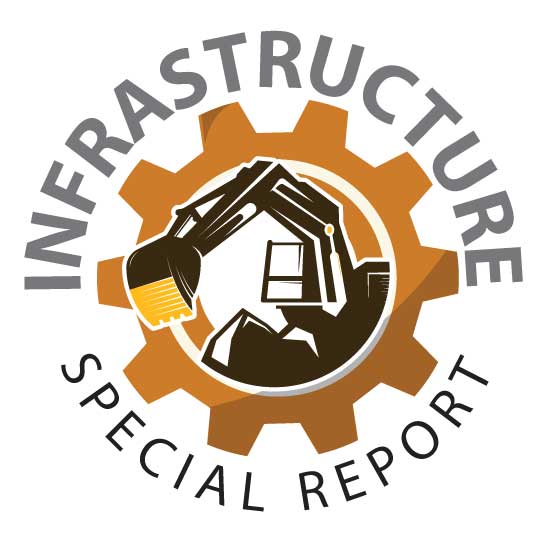
CONSTRUCTION WORKERS who fled their job sites to wait out the pandemic in the provinces have exposed a weak point in the government’s infrastructure program — its vulnerability to disruption if the builders can’t get to work.
The exact reasons that are preventing their return are a matter of some dispute. Charlie A. V. Gorayeb, chairman of the Chamber of Real Estate and Builders’ Association, said the lack of harmonized quarantine rules across the various government agencies and local governments led to the displacement of workers during the strictest phases of the lockdown.
“There are jobs but some have not started for the simple reason of lack of workers,” he said in a phone interview. “Workers have not really been organized yet because they are scattered all over the country.”

The government has touted its infrastructure program as a generator of jobs, to address massive unemployment caused by the lockdown after the coronavirus disease 2019 (COVID-19) outbreak. The government is planning infrastructure spending of P1.169 trillion this year.
Other delays in restarting construction projects often center on disputes over who will pay for safety measures at job sites, such as testing, the establishment of quarantine areas, and disinfection facilities, according to an official with the Philippine Society of Construction Safety Practitioners, who asked not to be identified.
He said the main issue keeping workers from job sites is anxiety about public health, and not the inability to travel.
“Big companies have service vehicles. They can pick up the workers,” he said in a phone interview, identifying the families of such workers as the main source of resistance to their return. The families, he added, plead for the workers to stay in their provinces and farm, instead of risking their health in the capital, where many of the projects are. The bulk of the active COVID-19 cases in the Philippines are in Metro Manila and neighboring provinces.
The Philippine Constructors Association, Inc. (PCA) estimated in November that 92% of all projects disrupted by the pandemic had restarted in some form, though how much their timetables have slipped remains unclear in the runup to the dry months, which builders must maximize before activity slows with the onset of the rainy season.
Construction accounts for half of all industrial jobs, employing 3.9 million people in October. Staffing has risen significantly from the 2.7 million tallied during the strictest phase of the lockdown in April, although it remains below the 4.2 million recorded before the pandemic, according to government data.
A major labor union said cost-sharing disputes over safety measures have been a major factor in keeping construction workers from returning, though it also cited the role played by the permits and testing required by local governments to move through their jurisdictions and the road checkpoints set up at the various borders.
Associated Labor Unions-Trade Union Congress of the Philippines Spokesperson Alan A. Tanjusay said in a phone interview that COVID-19 testing remains a problem.
“Mostly employers or contractors or even project coordinators contributed to testing expenses, but lately contractors haven’t been paying the cost,” he said.
Construction workers risk infection inside their housing, where safety protocols are not always observed, Mr. Tanjusay said, adding that personal protective equipment is also viewed as a hindrance by those who need to do heavy lifting.
The industry had been suffering from a shortage of skilled workers even before the pandemic, the PCA said in an e-mail in February, and called staffing a continuing challenge, particularly with movement restrictions in place.
“Skilled labor shortages are also driven by the inability or difficulty to return to Manila from the provinces, and this also holds true for other provincial centers,” PCA President Will Decena said.
“We are also seeing a number of workers unemployed as a result of the slowdown in private construction investment.”
Residential construction, for example, declined last year because of delays caused by the pandemic. Completed units fell 70% in 2020, real estate professional services company Colliers Philippines said in a report.
The construction safety official maintains that health protocols are doable for the industry, especially since face masks have long been used in construction, while social distancing can be implemented with proper organization of the jobsite.
Mr. Tanjusay said to attract more interest in construction work, compensation must improve and workers in the industry must be given priority for vaccines.
“The government should increase the minimum wage rate and vaccinate the workers,” he said. “To get the economy going, they should be prioritized for the vaccine. When construction sites open, the supply chain comes back to life.”
While the vaccination program is now on-going, essential workers under the A4 category are not yet being inoculated.
Mr. Gorayeb said that the government should contact construction workers in the provinces to give them information on how to return to their places of work.
The recovery of private sector construction could start in the last quarter of 2021 at the earliest, PCA projected, noting that the government roadmap plans for a 7.1 million-strong construction workforce by 2030.
“This will be a make-or-break year for contractors who carry most of the project risk, especially the small and medium-sized ones,” PCA’s Mr. Decena said.
“We need to support the contractors in dealing with the risks and challenges to carrying out their work, so they can evolve, rather than go extinct.”
Article and Photo originally posted by Business World last May 18, 2021 12:05am and written by Jenina P. Ibañez







More Stories
Vista Land Celebrates 50 Years with Sandiwa: An Event Honoring Leadership, Legacy, and the Filipino Dream of Homeownership
Vista Land Celebrates Love Month in Ilocos Region
Vista Land Bridges Cebuano Heritage and Progress with Valencia by Vista Estates